What to Make of This?
The three issue tale is a lot larger than anything else we've covered, but the Robin Hood-related aspect of it is only six pages. That's the length of a really short Green Arrow story from the late 1950s or early 1960s.
There is little to say here, except that while Green Arrow had become very political in the 1970s, this segment of the story was apolitical. Earlier in the issue, superhero Metamorpho calls Superman an “establishment-type” and Sandman leaves a note against tyrants pinned to Genghis Khan’s chest. Nothing of the kind appeared in the Robin Hood segment, and no discussions of the law as had occurred in the 1942 story. As Green Arrow had become dangerous, Robin Hood had become safe.
'There isn't a lot of time for the exploration of the Robin Hood legend. Intriguing moments such as the meeting between Robin Hood and the Earth-Two Green Arrow happen off-stage. The Merry Men aren't presented as robbers, and their outlaw status is neither fully confirmed nor is it denied. If anything, the Merry Men come off as a rebel army.
But they do seem to be a lethal army. Hawkman refers to them as "bloodthirsty bowmen", and that appears to be accurate as well as alliterative.
From a Green Arrow' fans perspective, there's a lot of missed opportunities. The Earth-Two Green Arrow is pretty much the same character who appears in all those previous Robin Hood-related tales. But the newly-transformed Earth-One Green Arrow -- the one who strongly identifies with political rebellion and Robin Hood, he doesn't even get to meet Robin Hood or the Merry Men.
The two Green Arrows are even denied a true meeting. We can see them next to each other in one group shot, but there's no conversation. What would the Green Arrow of the 1940s and 1950s make of the angrier, more political modern incarnation? As for the 1870s Ollie Queen who was much like his Earth-Two counterpart in the Justice League's early years, what would he make of looking into the metaphorical mirror at his pre-enlightened self.
Fortunately, we do get a sense of how the 1970s Green Arrow would react if thrust into Robin Hood's role with the next story.
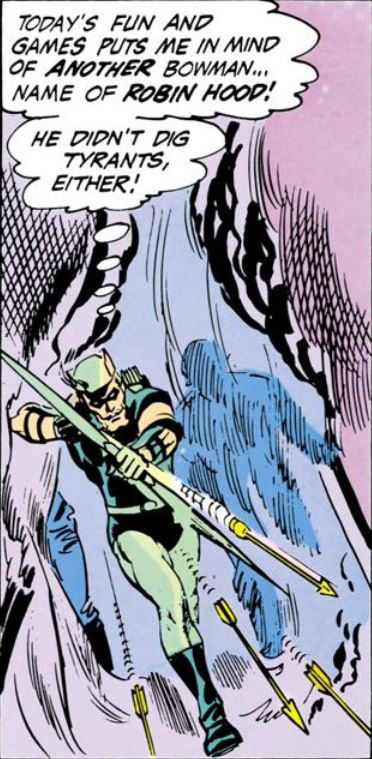
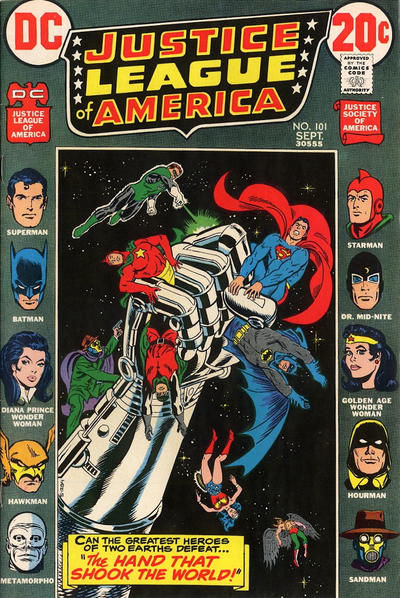
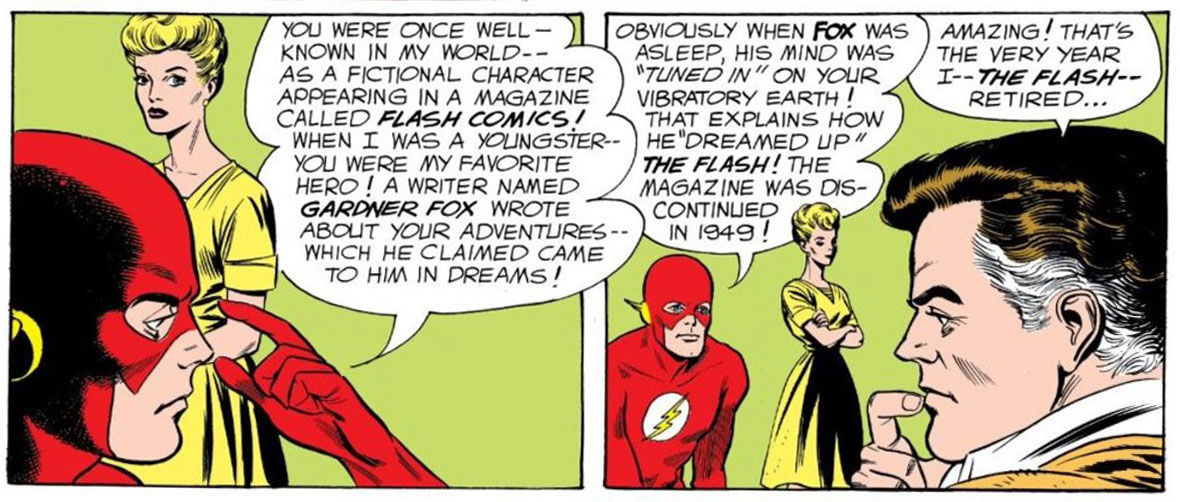
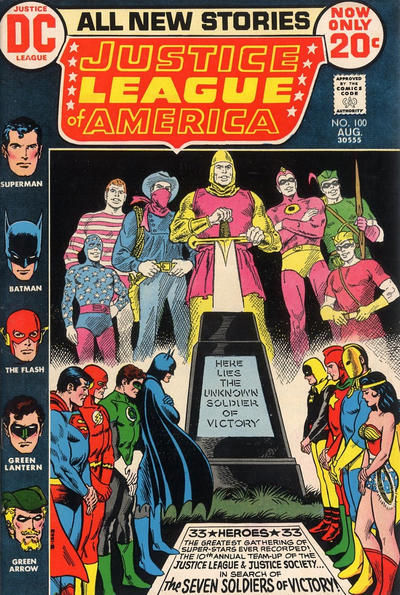
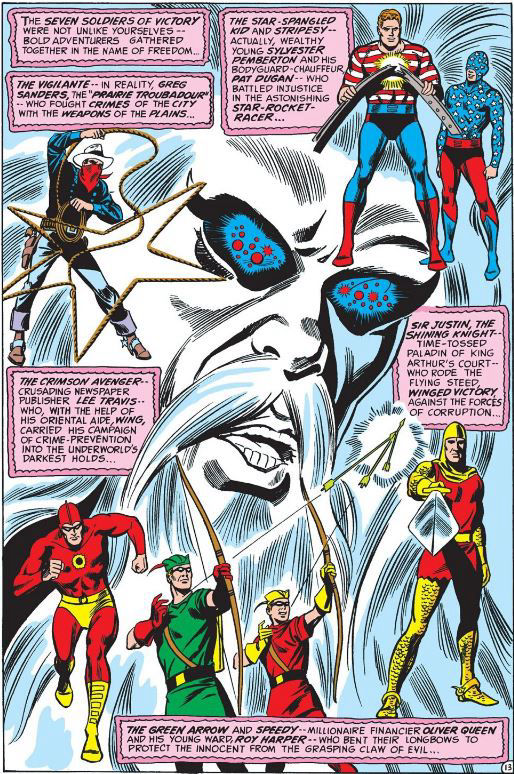

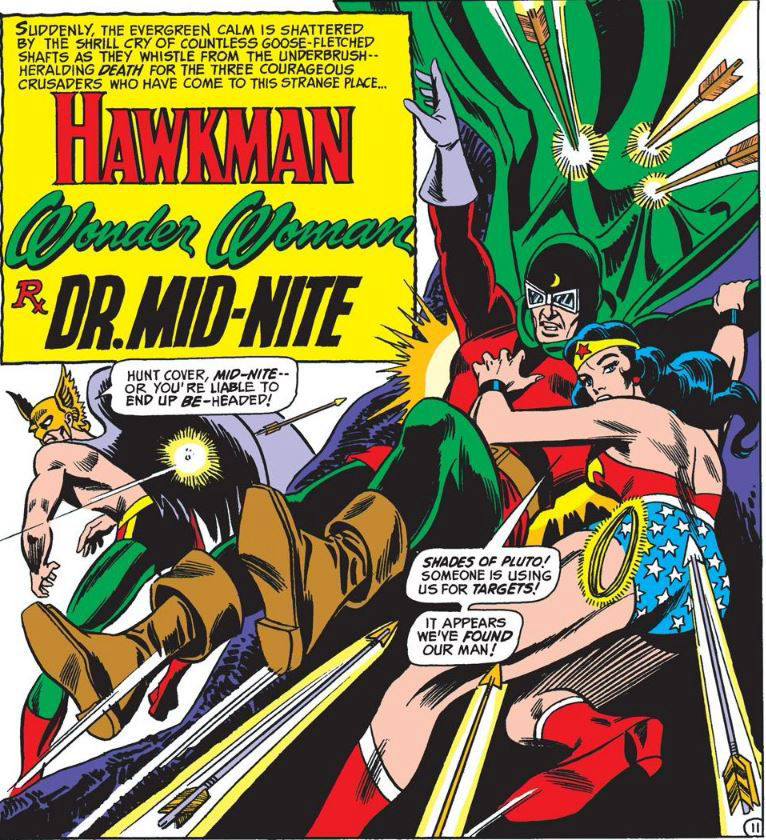
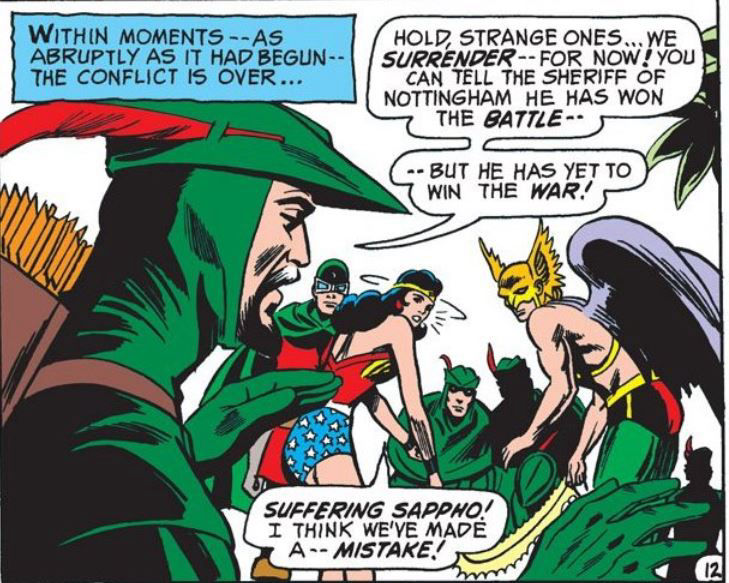
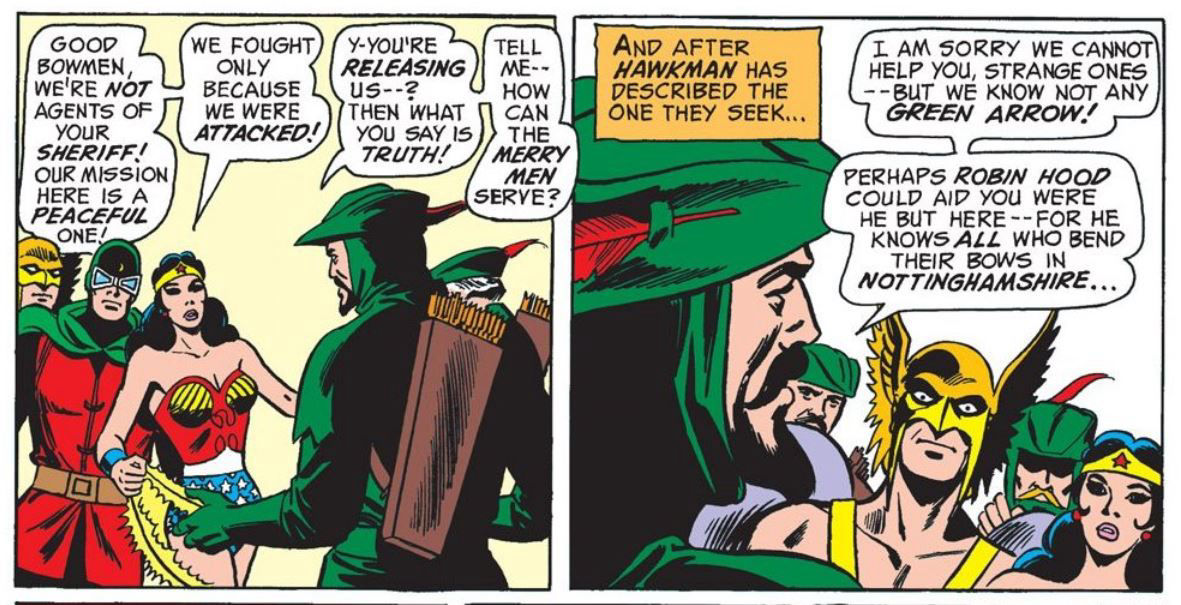
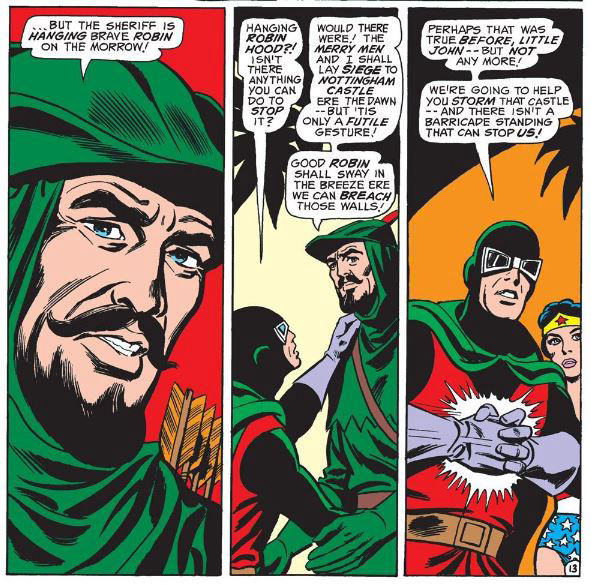
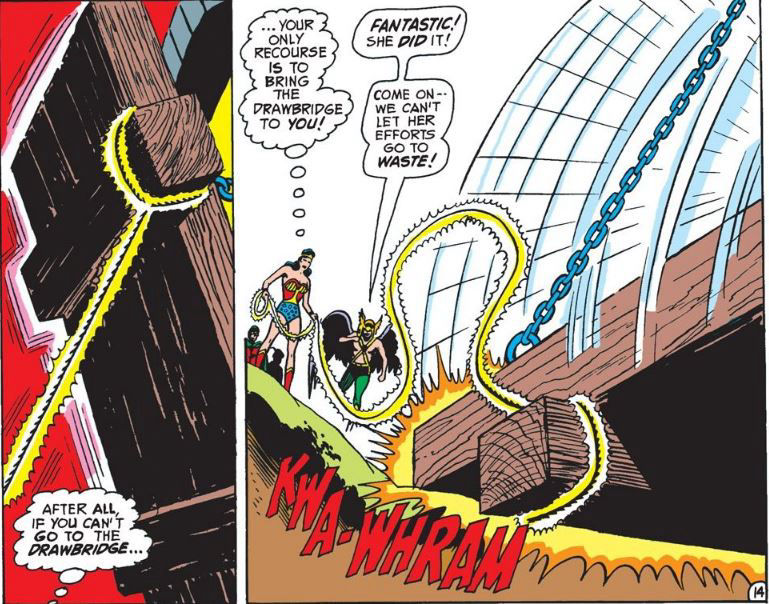
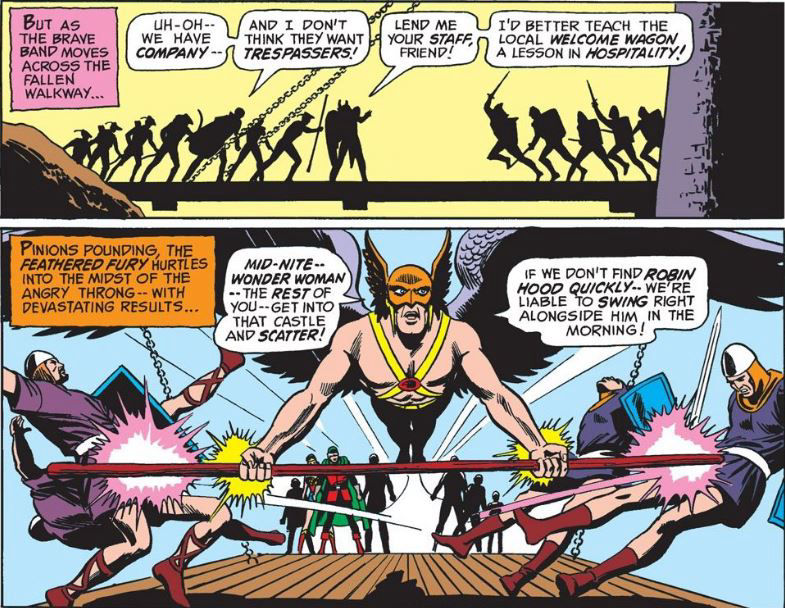
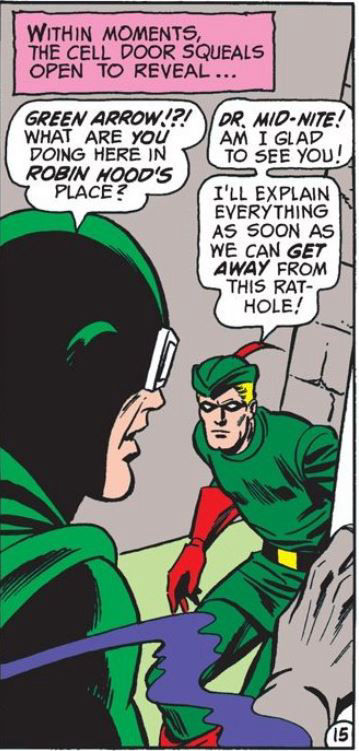
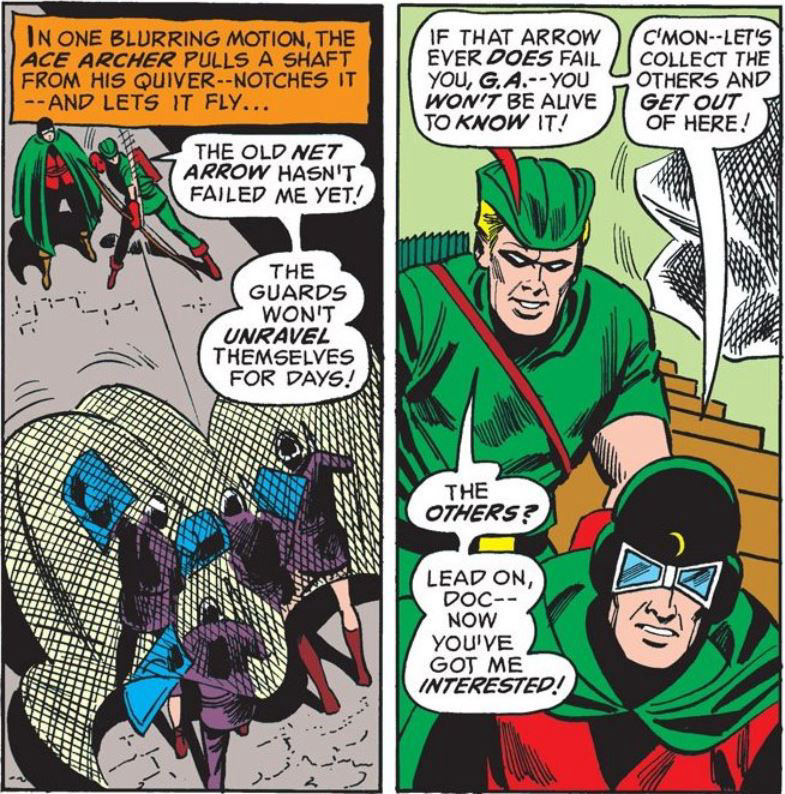
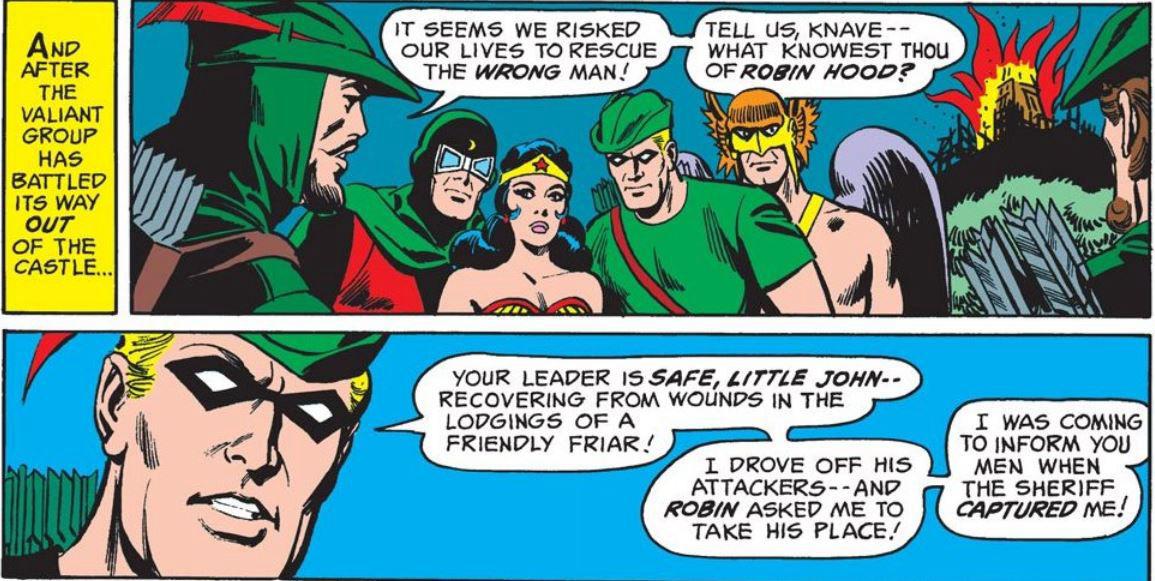
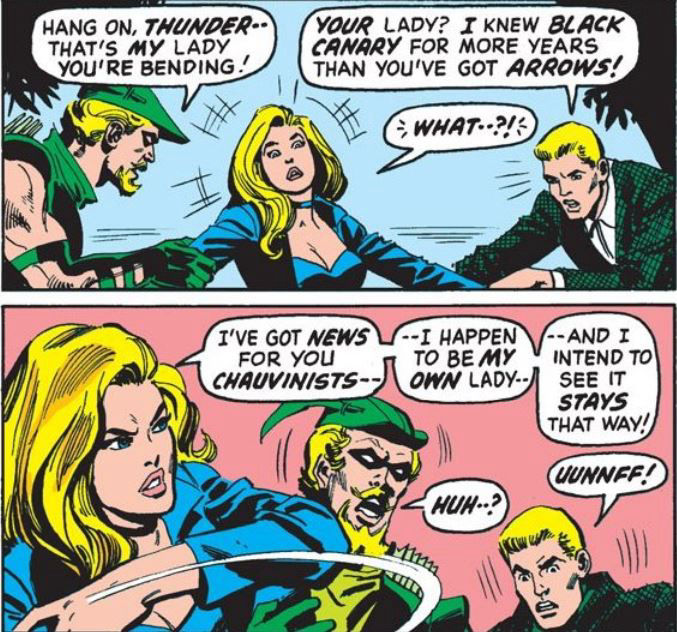
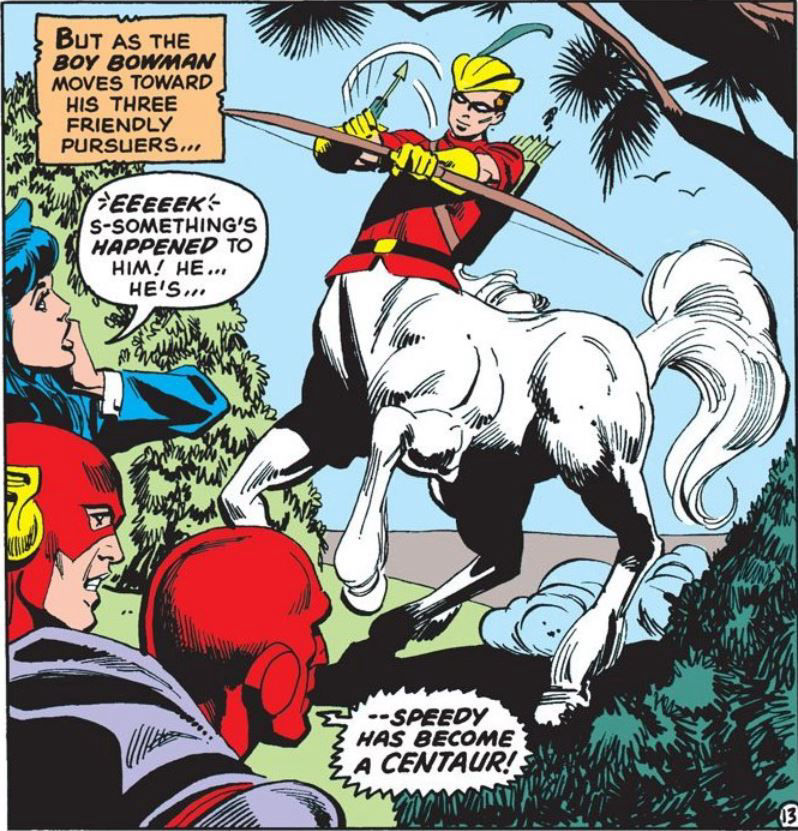
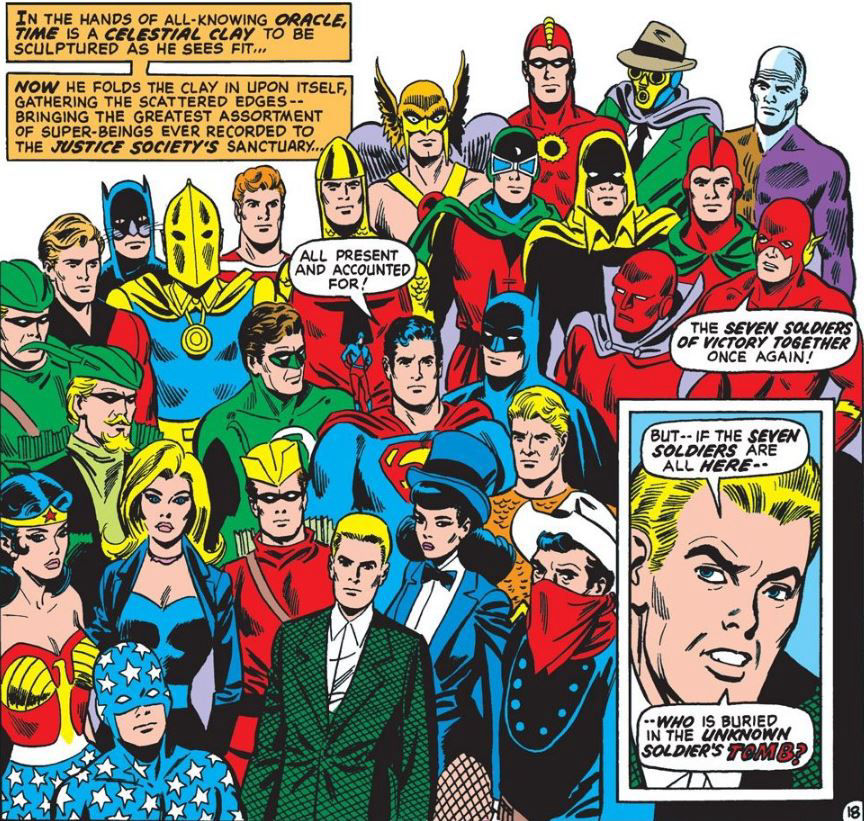
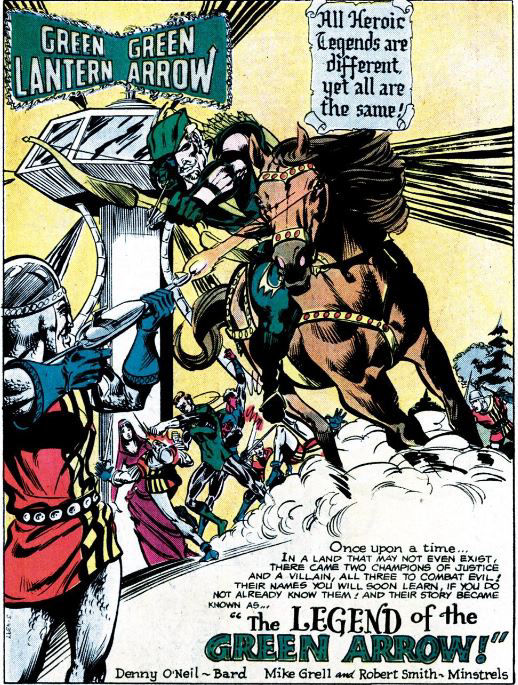
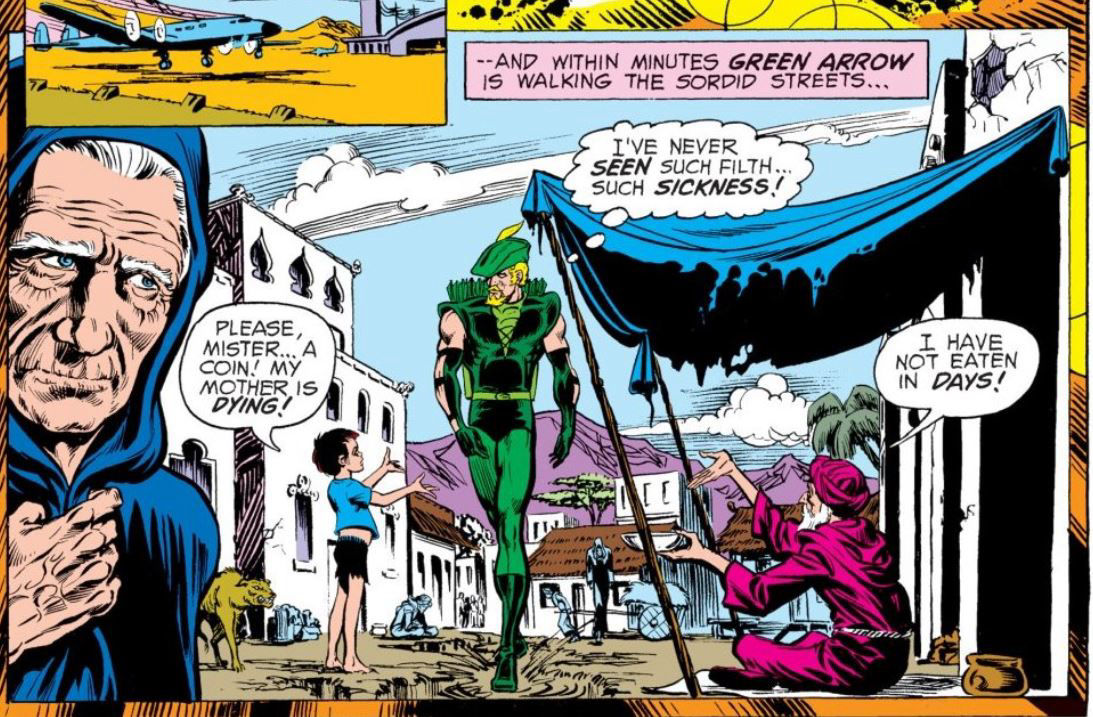
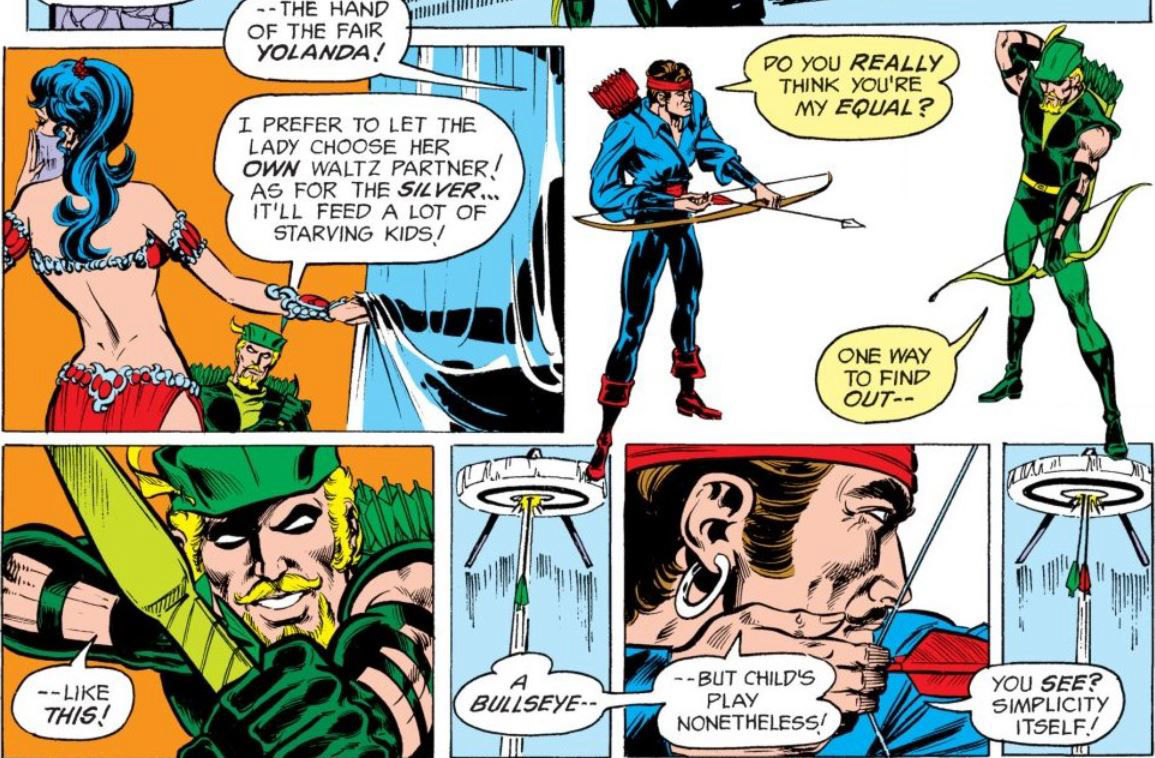
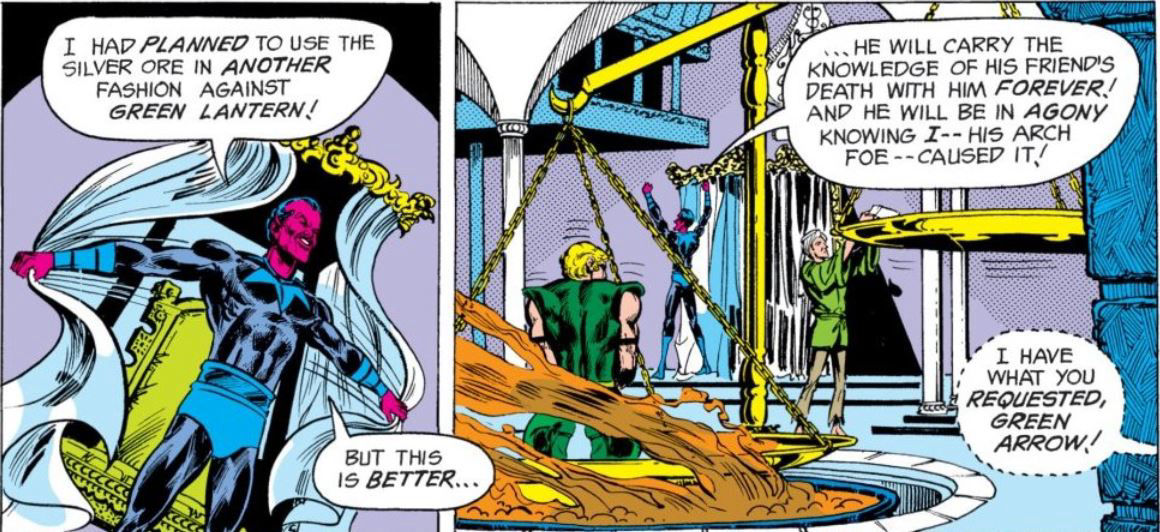
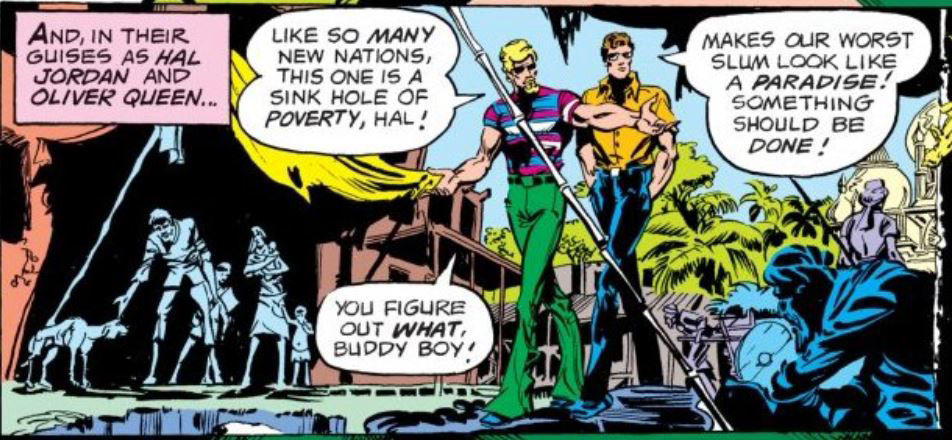
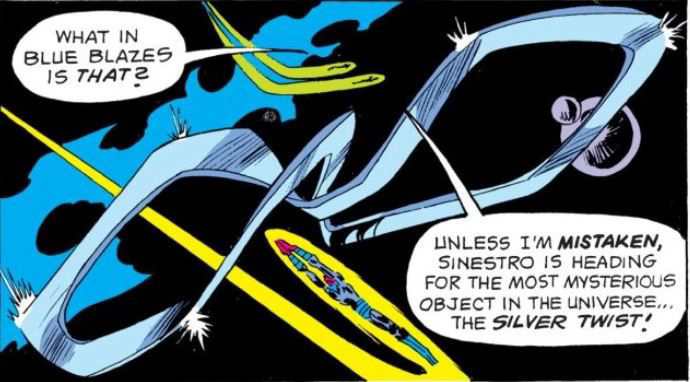
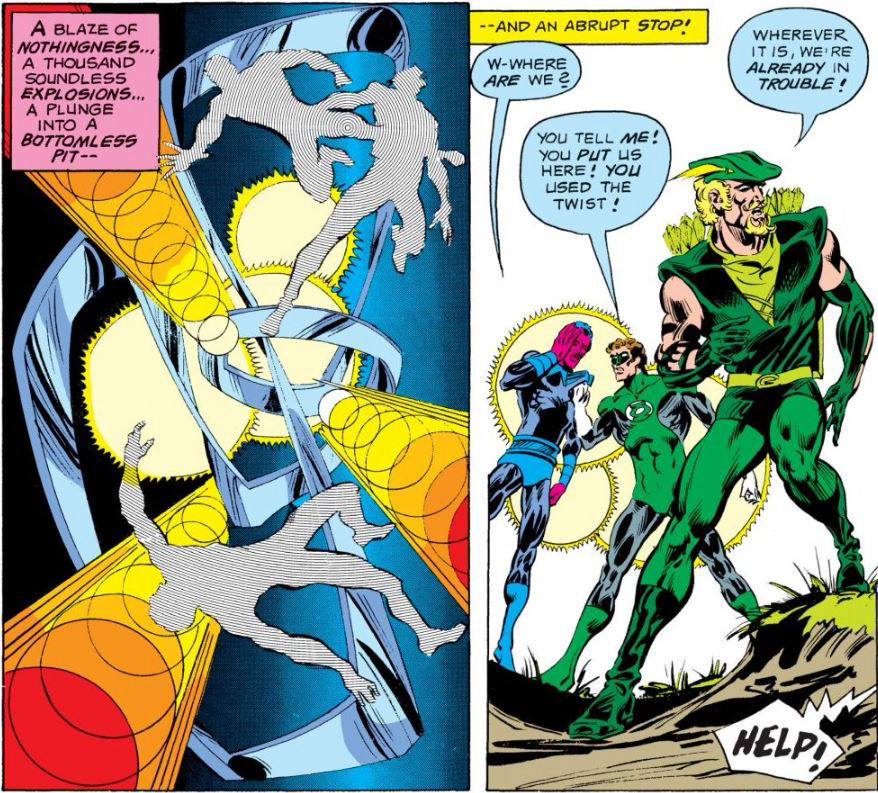
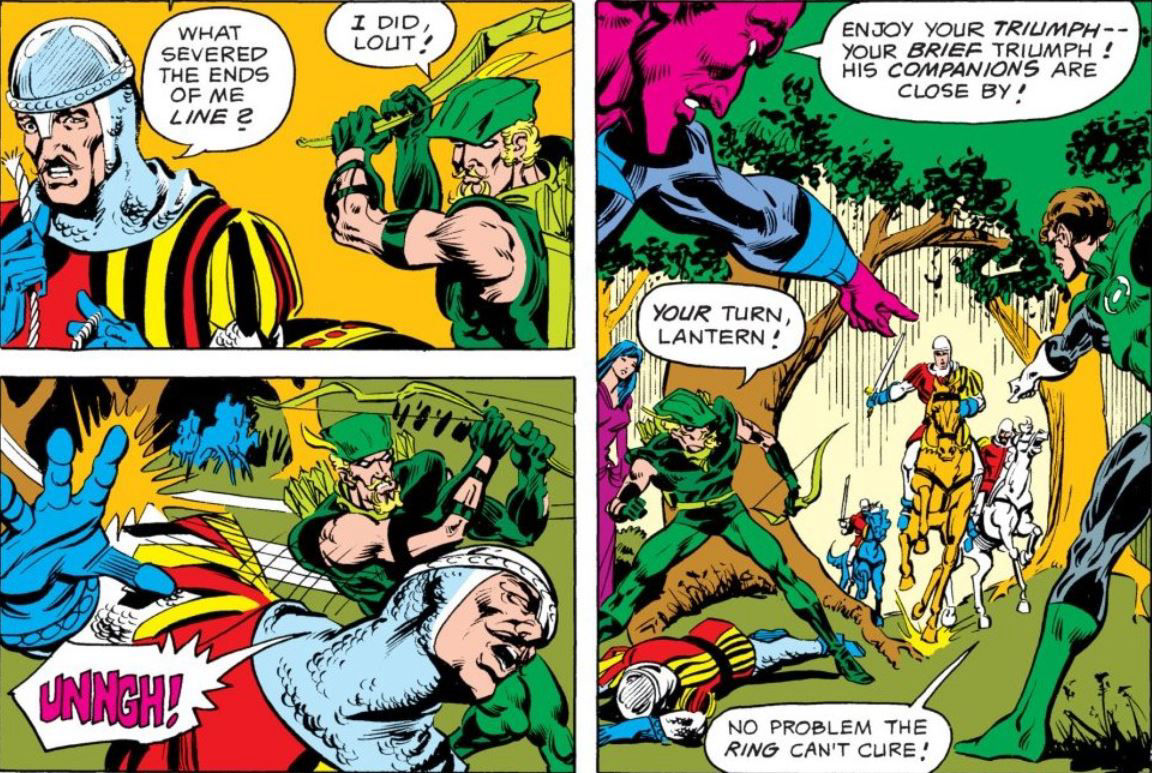
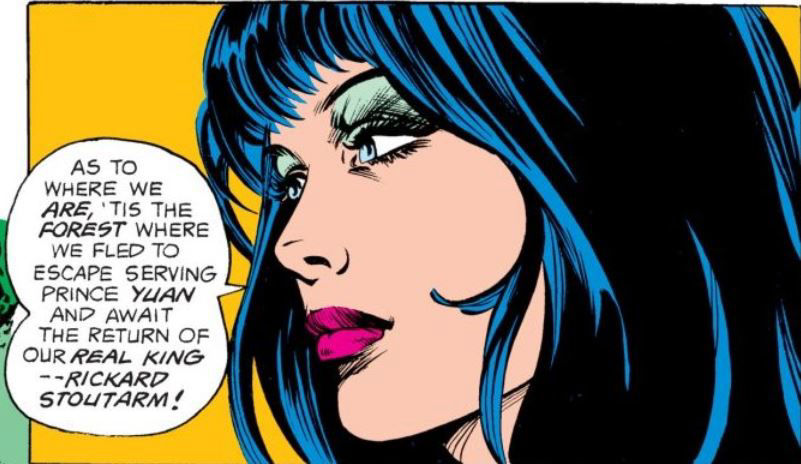
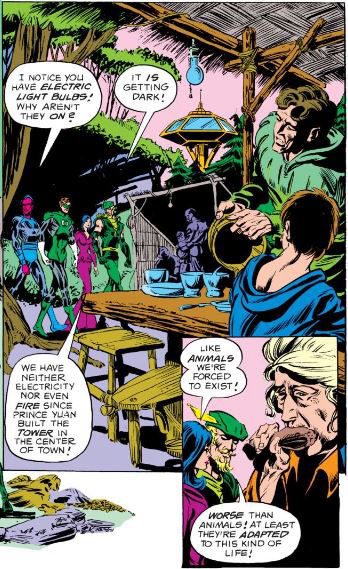
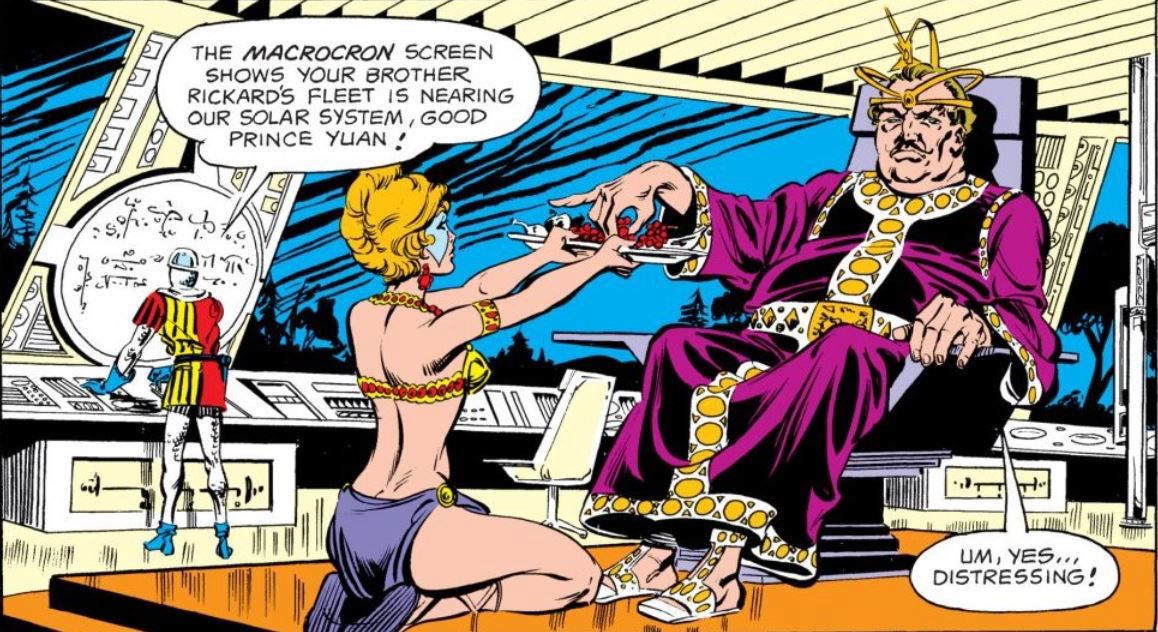
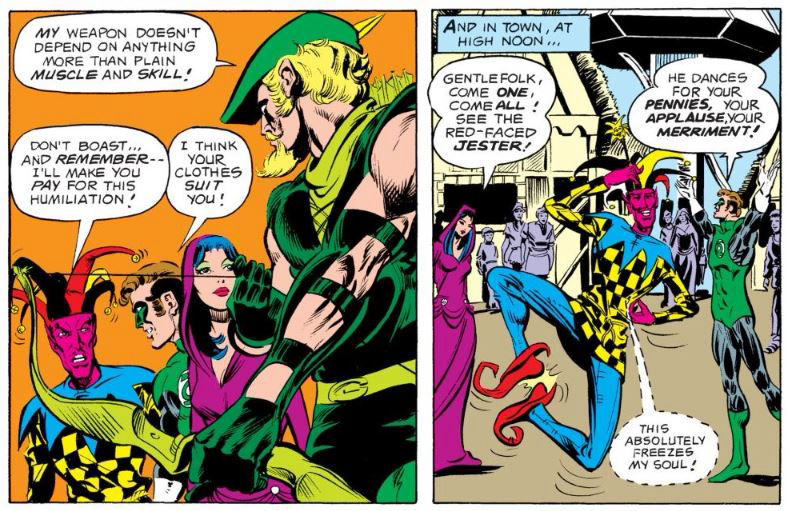
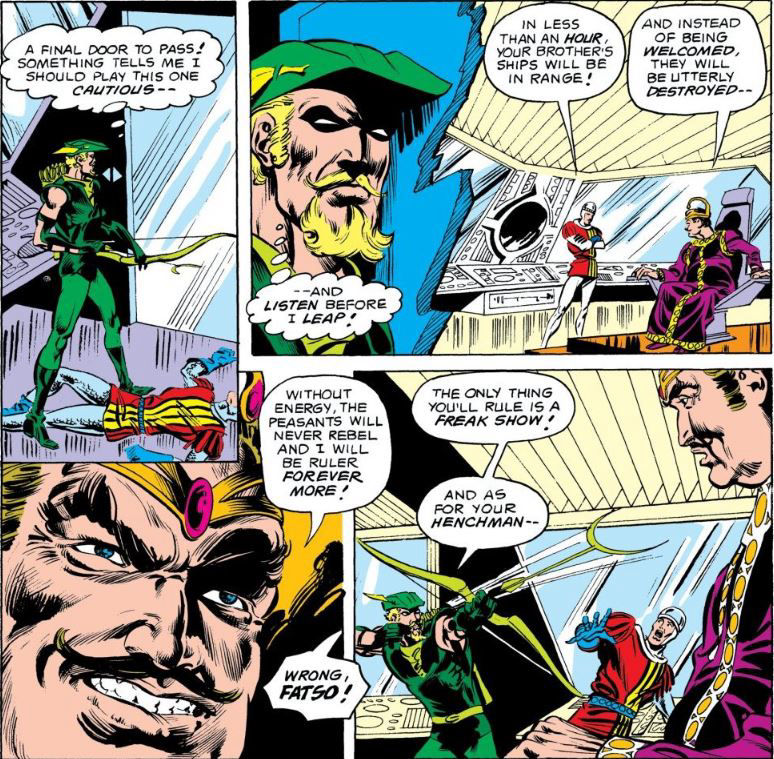
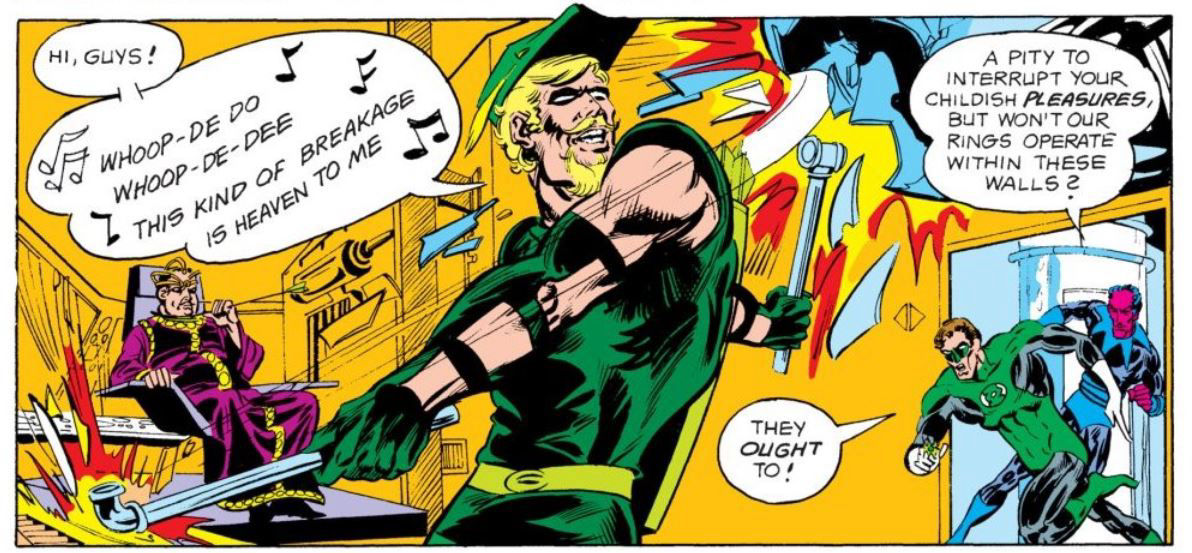
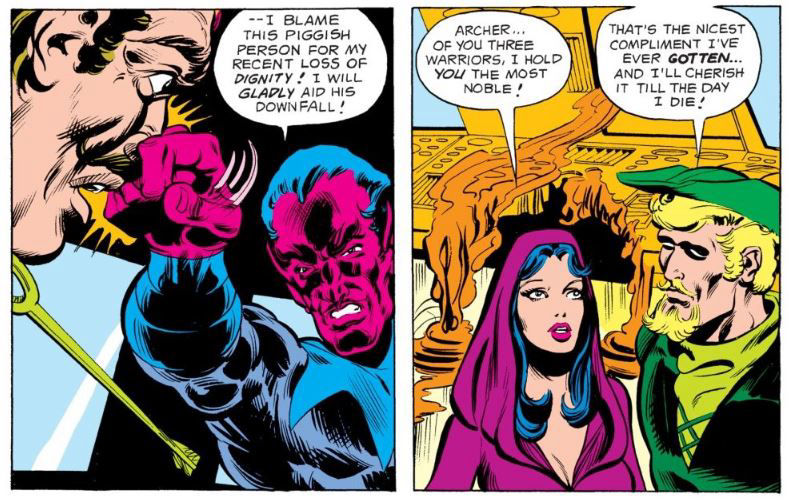
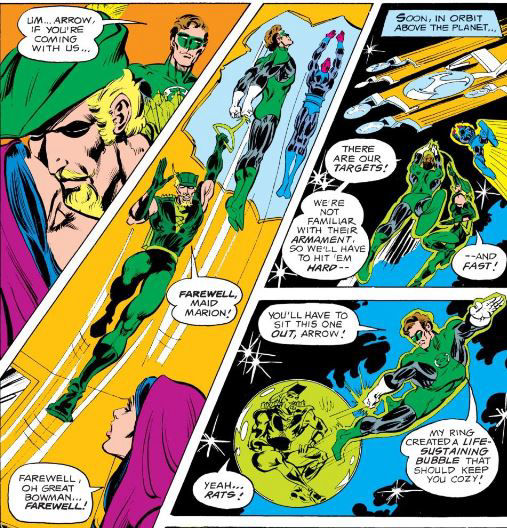
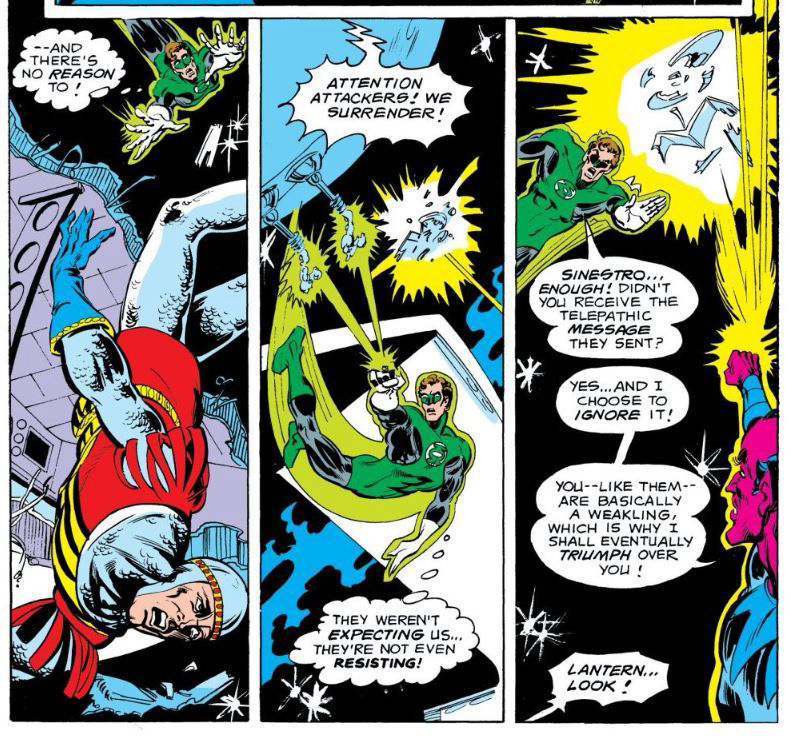
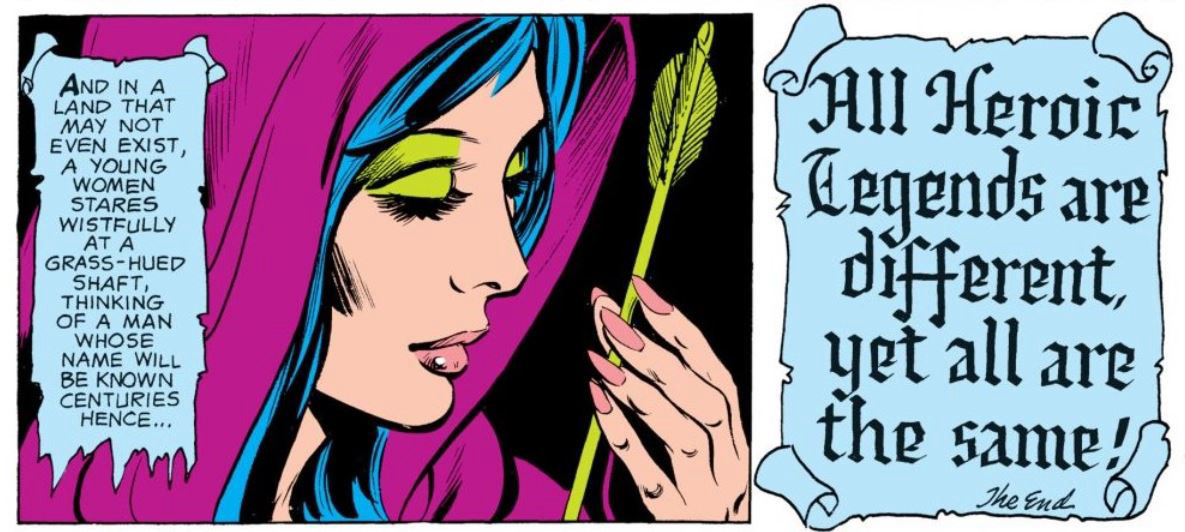
Contact Us